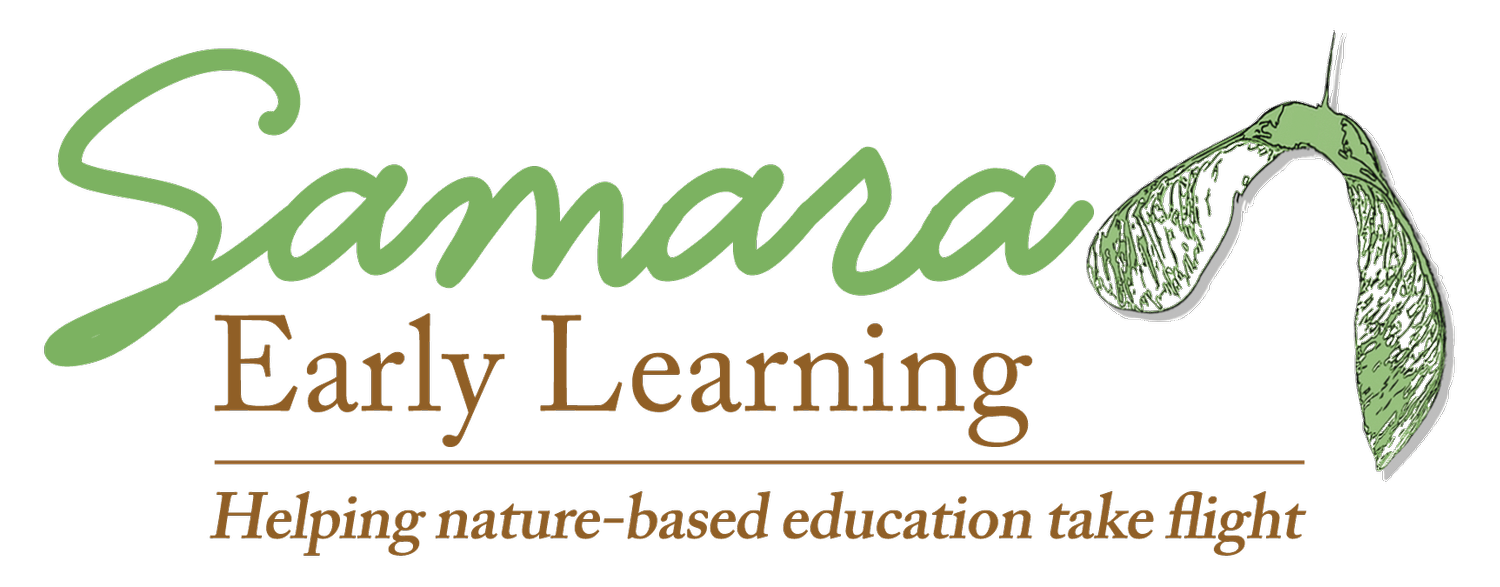Don’t let regulations spook you
This post originally appeared in Dr. Rachel A. Larimore’s weekly Samara newsletter on October 31, 2023. If you’re interested in receiving these emails, scroll to the bottom of this page to subscribe.
Early childhood education is full of regulations–licensing, quality rating improvement systems, compliance for funding sources, accreditation, etc. While they can be daunting, regulations are not something to be scared of.
Whether you’re contemplating starting a school or you have a school and are considering integrating more nature-based approaches, at some point you’ve probably had thoughts about regulations.
Often these thoughts manifest as “Yeah, nature sounds great, but…” The “but” may be followed by things like, “Our licensing rules won’t allow that” or “QRIS in our state doesn’t allow for nature.” In my experience, when we dig deeper in these situations most of the time we learn those statements are not in fact true.
If you find yourself having a “Yeah, but XYZ regulation…” I encourage you to think about the following as possible steps to finding a workable solution.
Remember shared goals–Whether for licensing, measures of quality, or funding compliance, regulators have the same goals as educators–to provide safe, enriching learning environments for young children. Conversations with regulators will go much more smoothly if we enter them with this common goal in mind. We have a childcare crisis, in the U.S. and globally, and regulators want children to have early learning opportunities. They don’t want to shut down programs, but they also prioritize keeping children safe and in healthy learning environments. This should be a shared goal between educators and regulators!
Familiarize yourself with regulations–Don’t assume a rule exists. Read the regulations. And read carefully. I’m amazed at the number of times I hear supposed rules only to research them myself and find out that rule doesn’t actually exist. So, you’ve heard there is a minimum temperature regulation in your state? Have you looked it up to see if that’s true and what the temperature is? Being familiar with the rules will make it much easier to have conversations with regulators.
Connect with others who have gone before–The wonderful thing about the growing nature-based movement is the odds are good that you’re looking to do what someone else has done before. These folks may not be in your local community or even state, but they’re out there. You may find there are alternative processes within your state. For example, at least one state* is currently piloting using the Nature-based Education Rating Scale (NABERS) as part of an alternative pathway to achieve a 5-star quality rating. Don’t assume it hasn’t been done. Reach out to others through professional associations like Natural Start Alliance or reply to this email and I’ll do my best to connect you with others in a similar situation..
Ask to see the rules if you’re told no–You’ve become very familiar with the rules, so if someone tells you a rule exists and that doesn’t align with your understanding then ask for clarification. With a kind, curious tone simply ask, “Could you show me where in the regulations I could find the language for that rule?” If the rule doesn’t exist or you and the regulator disagree on the interpretation, you may want to speak to the next person up the chain. Again, if done in a tone rooted in the shared goals of what is best for children, this should be no problem.
Request a variance if necessary–There will be times where a rule doesn’t exist related to the activity in question, but you can request an exception or variance to the rule. For example, when I was first a nature-based preschool director outdoor play areas required a playground inspection. However, we had a natural play area so the playground inspection didn’t apply. So, we asked for a variance. We had to create a detailed plan of how we would build and maintain the space to keep children safe.
I suggest that, when possible, you present a plan of action when you’re asking for a variance. You can turn to the others you’ve connected with (see above!) and other regulations for guidance on drafting these rules. For example, the State of Washington’s Outdoor Nature-based Child Care regulations is a great reference if you have limited access to indoor facilities. Or the State of Michigan has rules around natural playground* if you don't have a traditional playground and yet are required to have a playground inspection. The Natural Start Alliance’s Nature-based Preschool Professional Practices Guidebook is another useful tool!
*A final note on why not to be spooked by regulations: The one state piloting was a direct result of a nature-based program advocating for an alternative and suggesting the NABERS tool. The natural playground rules in Michigan were written as a direct result of the variance our school had requested a few years before. In other words, if you go in with the goal of doing what is best for children and working with regulators you may find you help move the nature-based education movement forward–and in significant ways!
Keep changing lives,
Rachel
Rachel A. Larimore, Ph.D., Chief Visionary of Samara Learning
P.S.—Did you know the American with Disabilities Act (ADA) now requires all websites to be accessible? I recently installed accessiBe which is a simple plugin that continuously monitors compliance. You can visit the Samara website to see it in action! This plugin removes the legal worries & allows you to better serve all potential customers (e.g., families!) I receive nothing for sharing this link–simply sharing as another regulation to be thinking about.

